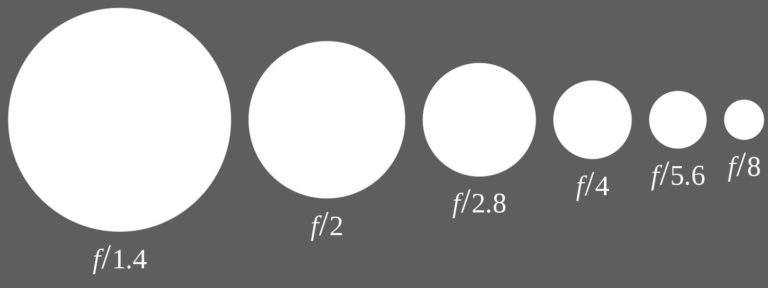

A small, narrow aperture lets in less light resulting in a darker exposure. A large, wide opening lets in tons of light, giving you a brighter exposure. The setting you pick directly affects how much light is reaching your camera sensor. We use words like "wide open" or "large" to describe a big aperture setting, versus words like "stopped down" or "narrow" to describe a small opening. (Your aperture setting also controls the depth of field in your image, which is covered in a different post.)Ĭan you see how different apertures affect the brightness of this image? In short, it affects the exposure of your image, or the brightness level. What does it do in my camera?Īperture controls the amount of light that you're allowing into your camera sensor, based on how wide/narrow the opening is for light to pass through.

Adjust your f-stop to see how the size of that aperture changes. If you push your shutter button in to focus, you'll see them shift in and out. Want to see it? Look at your lens as if you're taking a selfie and you'll see diagonal blades that form a "circular" opening in the back of your lens. It is not the size of your lens physically or how far it zooms - it's a variable setting that you can control inside the lens, where it connects to your camera. That hole is created by 6-9 aperture blades that shift in and out to vary the size of the opening.

What is Aperture?Īperture is a hole that lets light pass through your lens into your camera.
F STOP NUMBERS ISO
These three elements - aperture, shutter speed, and ISO - control how bright or dark your image is, or your overall exposure. That information is recorded on a chip with variable sensitivity (#3- your ISO). There are actually three components of exposure in photography: your camera lets in light through a circular opening (#1- your aperture), for a certain amount of time (#2- your shutter speed). Once you've read this post, you can read this post to understand how f-stops affect depth of field. Here's what this post will cover in more detail. Whew! That's a lot to think about in just one minute. A narrow aperture gives you more depth of field, meaning you'll have more in focus further away from your subject, and the background details will stay sharp. A wider aperture has a shallower area of focus around your subject, giving you a blurrier background. Of course, there are plenty of sizes in between these extremes, since this element will adjust incrementally depending on how much light you have.Īside from making your image brighter or darker, this setting also has a creative consequence: aperture controls the depth of field, or how much is in focus compared to your focus point.Ĭhanging your f-stop gives you the ability to either blur out the background or keep all the details in sharp focus, depending on your creative intention. So wide/large apertures have low f-numbers like f/1.8, f/2, or f/4 and small/narrow apertures have higher f-numbers like f/11, f/16, or f/22. The key to understanding f/stops is remembering that f-stops move counter-intuitively because they are written as a fraction. Smaller apertures let in less light to your image, similar to how a small window or porthole would make the room feel darker.Īperture is measured in terms of f/numbers or f/stops. Aperture is a lot like a window - a big aperture lets in lots of light to your image, the same way a large window makes the room feel brighter. On a camera, the aperture is a hole with a variable size that lets light through your lens and into your camera sensor. Got only a minute? Here's a quick summary:Īperture is one of the three elements of exposure that create an image (along with shutter speed and ISO) and affect the overall brightness of your image. This post has examples especially for moms who are beginners. If you want help with learning the fundamentals of photography for your DSLR camera, then I've got you covered. It may seem tricky at first, but this post will help you understand aperture, f-stops, and f/numbers, as well as how they work and why they matter! Aperture is one element of exposure that controls image brightness.


 0 kommentar(er)
0 kommentar(er)
